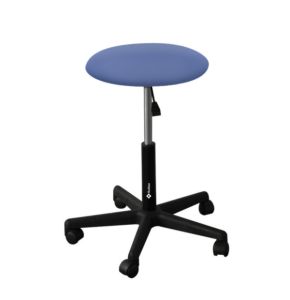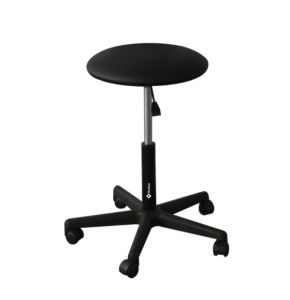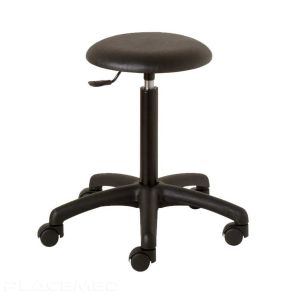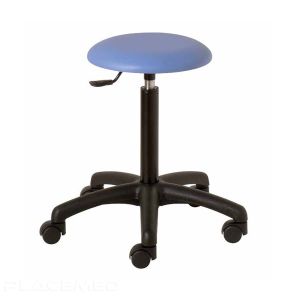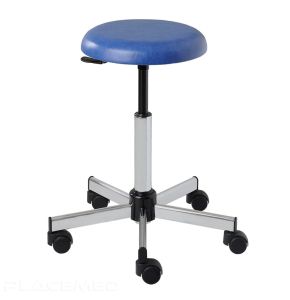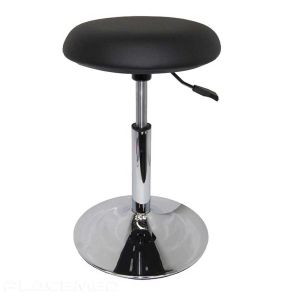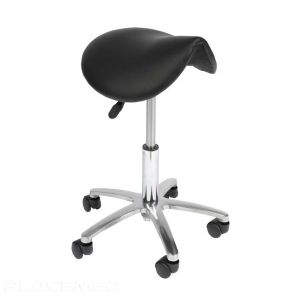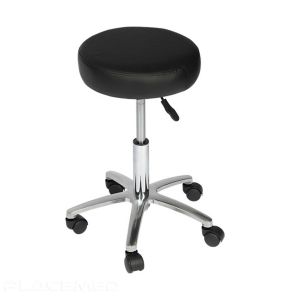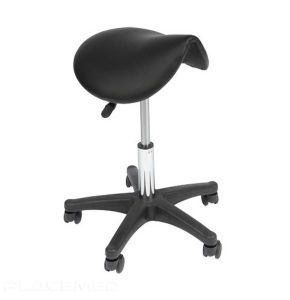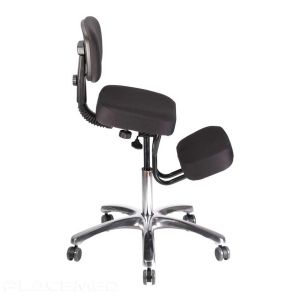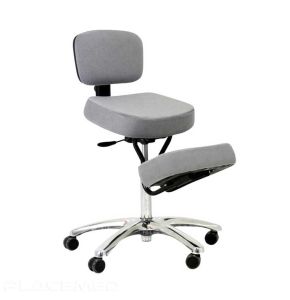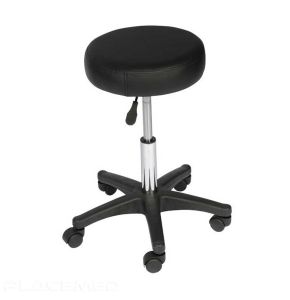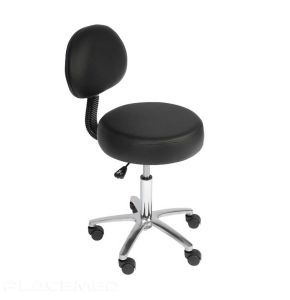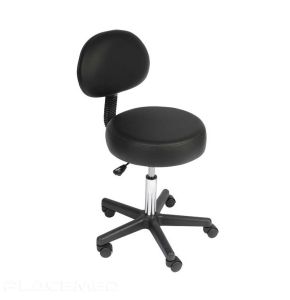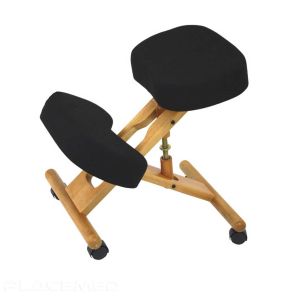Medical Stool
3661040196138 18/11/2024 385
3661040162645 18/11/2024 355
18/11/2024 366
18/11/2024 299
18/11/2024 319
3664595007157 18/11/2024 448
3760223832440 18/11/2024 394
3760223831696 18/11/2024 302
3760223832433 18/11/2024 379
739186980355 18/11/2024 345
739186981208 18/11/2024 361
3760223831771 18/11/2024 300
3760223832426 18/11/2024 359
3760223832419 18/11/2024 309
3760223830712 18/11/2024 365
Medical Stool: Practitioner Comfort!
The medical stool is an essential element in any medical or dental office. It not only provides optimal comfort to the practitioner but also increased mobility during medical procedures. Indeed, choosing a good stool can greatly influence the quality of care provided. At Placemed, we offer a wide range of medical stools tailored to the specific needs of healthcare professionals, whether they are general practitioners, specialists, or dentists.
Importance of the Medical Stool
Practitioner comfort is paramount to ensure quality care. A well-designed medical stool reduces fatigue during procedures, allowing the doctor or dentist to fully concentrate on the patient. Indeed, an uncomfortable sitting position can lead to muscular and skeletal pain, affecting the professional's performance. Therefore, the working position must be optimized to prevent these discomforts.
Mobility is also a major asset of the medical stool. Thanks to its wheels, the practitioner can easily move around the patient, adjusting their position according to the needs of the examination or intervention. This freedom of movement is essential to access different areas without interrupting the procedure. The medical swivel stool, with its smooth wheels, offers this indispensable flexibility on a daily basis.
Types of Stools
There are several types of medical stools to meet the varied needs of professionals. The stool with backrest offers additional lumbar support, ideal for long procedures where the practitioner must remain seated for extended periods. The adjustable backrest allows for adjusting the support according to the practitioner's working position, thereby preventing back pain.
Conversely, the stool without backrest offers greater freedom of movement, promoting a dynamic posture. This can be beneficial for interventions requiring frequent movements. For dentists, the dentist stool is specially designed with an ergonomic seat to facilitate access to the patient's mouth. The dentist chair, on the other hand, is equipped with a comfortable medical seat and sometimes armrests for additional support. The medical chair with armrests is particularly appreciated for the comfort it provides during complex interventions.
The standard seat is suitable for a classic sitting position, while the saddle seat, such as the dental saddle seat, promotes a more upright posture, reducing tensions on the back and neck. The ergonomic dental saddle is designed to encourage an active sitting position, improving blood circulation and reducing muscle fatigue. The ergonomic dental stool is therefore a wise choice to prevent pain related to prolonged sitting and improve the quality of dental care.
Ergonomic Features
Modern medical stools incorporate numerous ergonomic features to enhance practitioner comfort and health. Multiple adjustments, such as height adjustment, seat inclination, and sometimes even backrest inclination, allow the stool to be adapted to the practitioner's morphology and the nature of the procedure. Taking individual needs into account is essential to ensure optimal comfort and prevent musculoskeletal disorders.
Hygienic coverings are also an important aspect. The materials used for the medical seat covering are easy to clean and resistant to disinfectants, ensuring perfect hygiene in the medical or dental office. This is particularly crucial in environments where the risk of contamination must be minimized. Furthermore, these materials are designed to withstand intensive use, ensuring the durability of the medical stool.
Wheels and Stability
The stability of the medical stool is paramount for the safety of both the practitioner and the patient. The stools are equipped with anti-trace wheels, which not only protect the office floors but also allow for smooth and silent movement. This helps maintain a calm and professional environment.
Braking systems are another important safety feature. They allow the stool to be locked in place, preventing any involuntary movement during delicate procedures. This functionality is particularly useful during treatments requiring extreme precision. The medical swivel stool thus combines mobility and stability, offering the practitioner the best of both worlds.
Innovations
Technological innovations have also touched the field of medical stools. Dynamic stools are designed to encourage movement, helping to prevent muscle tensions caused by prolonged sitting. These stools are often equipped with mechanisms that allow the seat to tilt slightly, engaging the trunk muscles and improving the practitioner's overall posture.
Technological integration also manifests in instrument supports built into the stool. For example, some models of medical chairs can be equipped with small trays or supports to keep frequently used instruments within reach. Additionally, integrated controls can allow height or inclination adjustments without having to lean forward, thus avoiding uncomfortable movements.
These innovations aim to improve practitioner comfort, increase procedure efficiency, and offer better quality care to patients. Investing in a modern and innovative medical stool is therefore a strategic choice for any office concerned with the well-being of its staff and patients.
Tips for Choosing the Ideal Medical Stool
Choosing the right medical stool is essential to guarantee the practitioner's comfort and health. Here are some tips to consider during your selection:
- Evaluate your needs: Consider the nature of your procedures, the average duration of interventions, and your personal preferences regarding comfort.
- Test different models: If possible, try several types of stools to determine which one suits you best. A comfortable sitting position is indispensable.
- Check available adjustments: Ensure that the stool is height-adjustable and that the seat or backrest inclination can be adjusted. This will allow you to adapt the seat to your working position.
- Consider the quality of materials: Opt for hygienic and durable coverings, easy to clean, to maintain a healthy environment.
- Consider mobility options: The wheels should offer good freedom of movement while being stable. Braking systems are a plus for safety.
- Think about ergonomics: An ergonomic stool, like the ergonomic dental stool, can help prevent pain and muscle tensions.
In conclusion, the medical stool is much more than just a seat in an office. It is an essential tool that contributes to the practitioner's health and comfort, while improving the quality of care provided to patients. Whether it's a dentist stool, a medical chair with armrests, or an ergonomic dental stool, it is important to choose a model suited to your specific needs.
At Placemed, we understand the importance of this equipment for healthcare professionals. That is why we offer a wide selection of high-quality medical stools, meeting the strictest standards in ergonomics and hygiene. Feel free to browse our catalog to find the medical stool that will accompany you daily in your professional practice.
 Francais
Francais 
